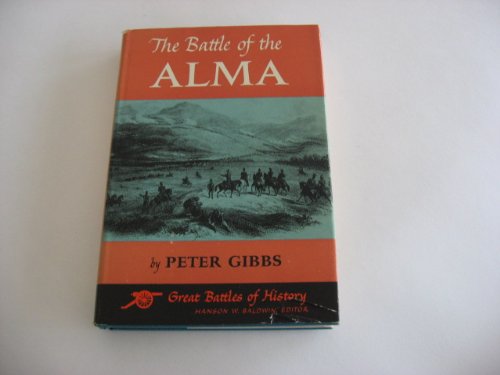


Books in series
First Battle of the Marne
1979

Armageddon, 1918
The Final Palestinian Campaign of World War I
1964
The Zula War
Isandhlwana and Rorke's Drift
1963

THE BATTLE OF THE ALMA
1963

The Darkest Day
The Washington-Baltimore Campaign During the War of 1812
2003

A Leap to Arms
The Cuban Campaign of 1898.
1970

Caporetto 1917
1965

Victory at High Tide
The Inchon-Seoul Campaign
1968

The Last Campaign
Grant Saves The Union
1972

Climax at Buena Vista
The Decisive Battle of the Mexican-American War
1966
Authors
Cyril Bentham Falls CBE was a British military historian, journalist and academic of Anglo-Irish extraction. During World War I he joined the British Army, receiving a commission as a subaltern in the Royal Inniskilling Fusiliers. He also served as a Staff Officer in the Headquarters of the 36th (Ulster) Division and the 62nd (2nd West Riding) Division during the course of the war. He was awarded the French Croix de Guerre, and was discharged from the British Army with the rank of Captain. After completing his military service, Falls wrote a history of one of the units he had served with during the war. His first book, 'The History of the 36th (Ulster) Division' was published in 1922. From 1923 to 1939 he was employed by the Historical Section of the U.K. Government's Committee of Imperial Defence, researching and writing several volumes of the British Government's 'Official History of the War'. During World War II he served as the military correspondent for 'The Times' of London, from 1939 to 1945. After the war he held the post of Chichele Professor of Military History at All Souls College, Oxford University from 1946 to 1953.
Robert Brown Asprey was born in Sioux City, Iowa (1923 – January 26, 2009) and was an American military historian and author, noted for his books on military history published between 1959 and 2001. Asprey received a bachelor's degree from the University of Iowa in 1949, after serving in World War II. He also studied at New College, Oxford, at the University of Vienna, and at the University of Nice. In World War II, Asprey was a member of the secret Marine Beach Jumper Unit, then joined the 5th Marine Division. In the 1950s, he served in U.S. Army Intelligence in Austria before returning to the U.S. Marine Corps in the Korean War with the rank of captain. He received a Purple Heart and a Presidential Unit Citation for his service.
Earl Schenck Miers was an American historian. He wrote over 100 published books, mostly about the history of the American Civil War. Some of them were intended for children, including three historic novels in the We Were There series. Miers received honorary degrees from Lincoln College and Rutgers University. On 17 November 1972, at the age of 62, Miers died at his home in Edison, New Jersey.
David Sievert Lavender was a well-known historian of the Western United States, nominated twice for the Pulitzer Prize, who is best remembered by many for his River Runners of the Grand Canyon. Lavender spent most of his life in Ojai, California. An articulate and deeply knowledgeable speaker on the political and social history of the American West, he often spoke at the annual Telluride Film Festival.